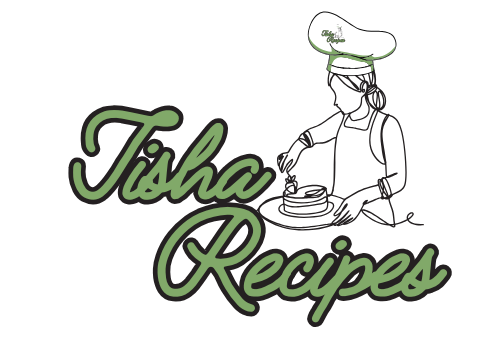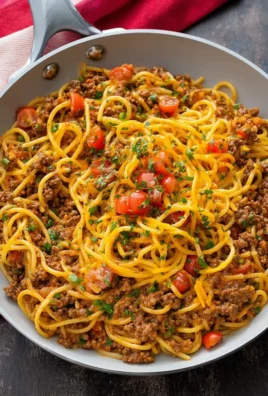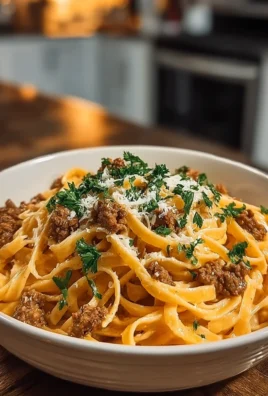
Mushroom risotto is a quintessential Italian dish that has earned its place as a beloved classic across the globe. Known for its creamy texture, earthy flavors, and rich aromas, mushroom risotto is both comforting and sophisticated. It’s a dish that balances simplicity with elegance, making it equally suitable for casual family dinners and upscale gatherings.
What sets mushroom risotto apart is the care and technique involved in its preparation. The process of gently coaxing starch from the rice grains, layer by layer, results in a velvety, indulgent consistency that feels luxurious with every bite. Mushrooms, with their umami-rich profile, add depth and character to the dish, creating a perfect harmony between the creaminess of the risotto and the earthiness of the mushrooms.
Historical Background
The Origins of Risotto
The history of risotto begins in Northern Italy, where rice was first introduced during the Middle Ages. The fertile plains of Lombardy and Piedmont provided ideal conditions for cultivating short-grain rice, particularly varieties like Arborio, Carnaroli, and Vialone Nano. These grains became the foundation of risotto, a dish that emphasizes the natural creaminess of the rice through careful cooking techniques.
Rice was brought to Italy by Arab traders in the 8th or 9th century, but it wasn’t until the 15th century that it became widely cultivated in Northern Italy. By the Renaissance, rice had become a staple ingredient in Italian cuisine, particularly in regions with abundant water sources, such as the Po Valley. Risotto, which means “little rice” in Italian, emerged as a popular way to cook rice, transforming it into a luxurious and flavorful dish through the addition of broth, butter, and cheese.
The Introduction of Mushrooms
The pairing of mushrooms with risotto is a natural progression in Italian culinary history. Italy’s forests are home to a wide variety of mushrooms, from humble cremini and button mushrooms to prized porcini and truffles. These ingredients have been integral to Italian cooking for centuries, often foraged and celebrated for their intense, earthy flavors.
Mushroom risotto likely gained prominence as a way to showcase these seasonal ingredients, allowing their rich umami notes to shine. The dish became a staple in Italian households, particularly during autumn, when mushrooms are most abundant.
Evolution in Global Cuisine
While risotto has its roots in Italy, it has since become a global phenomenon. Mushroom risotto, in particular, is celebrated for its versatility and adaptability. Chefs around the world have embraced the dish, introducing local ingredients and techniques to create unique variations. Despite these innovations, the core of mushroom risotto remains unchanged: a dedication to quality ingredients and meticulous preparation.
Cultural Significance
Mushroom risotto holds a special place in Italian culture, reflecting the values of tradition, seasonality, and family. It is often associated with comfort and hospitality, embodying the warmth and generosity of Italian cuisine.
A Dish for Gatherings
In Italy, risotto is frequently served during family gatherings and celebrations. Its ability to feed a crowd makes it a popular choice for communal meals, where the act of sharing food becomes a symbol of togetherness. Mushroom risotto, in particular, is prized for its heartiness and depth of flavor, making it an ideal centerpiece for special occasions.
Showcasing Seasonal Ingredients
Mushroom risotto exemplifies the Italian philosophy of cooking with fresh, seasonal ingredients. Foraging for wild mushrooms is a cherished tradition in many Italian regions, and the resulting risotto is a testament to the importance of connecting with nature and honoring its bounty.
A Symbol of Culinary Skill
Preparing risotto is considered an art form in Italian cuisine, requiring patience, attention to detail, and a deep understanding of technique. Mushroom risotto, with its emphasis on achieving the perfect balance of creaminess and flavor, is often seen as a test of a cook’s skill. In professional kitchens, mastering risotto is a rite of passage for aspiring chefs.
The Components of Mushroom Risotto
Mushroom risotto’s appeal lies in its simplicity. Each ingredient plays a vital role in creating a dish that is greater than the sum of its parts.
Rice
The choice of rice is critical to the success of risotto. Short-grain varieties like Arborio, Carnaroli, and Vialone Nano are preferred for their high starch content, which contributes to the dish’s creamy texture. Each type has its own characteristics:
- Arborio: The most commonly used rice for risotto, known for its plump grains and creamy consistency.
- Carnaroli: Often considered the “king” of risotto rice, prized for its firm texture and ability to absorb flavors.
- Vialone Nano: A smaller, more delicate grain that produces a lighter risotto.
Mushrooms
Mushrooms are the star of the dish, providing depth, earthiness, and a touch of luxury. Popular choices include:
- Cremini: Also known as baby bellas, these mushrooms offer a robust flavor and meaty texture.
- Porcini: A classic choice for mushroom risotto, prized for their intense, nutty aroma. Often used dried and rehydrated for convenience.
- Button Mushrooms: Mild and versatile, they are an accessible option for everyday cooking.
- Truffles: The ultimate indulgence, shaved truffles elevate the dish to gourmet status.
Broth
The broth is the backbone of risotto, infusing the rice with flavor as it cooks. High-quality broth—whether vegetable, chicken, or mushroom—is essential for a well-rounded dish. Homemade broths are preferred, as they allow for greater control over the flavor profile.
Cheese and Butter
Parmesan cheese and butter are added at the end of cooking to enrich the risotto and create a velvety texture. These ingredients also add a savory, umami element that enhances the overall flavor of the dish.
Aromatics and Wine
Onions, shallots, and garlic form the aromatic base of mushroom risotto, building depth and complexity. White wine is traditionally used to deglaze the pan, adding acidity and balancing the richness of the dish.
Why Mushroom Risotto Endures
Mushroom risotto’s enduring popularity can be attributed to its versatility, simplicity, and elegance. It is a dish that can be dressed up for fine dining or enjoyed as a comforting meal at home. Its ability to showcase the natural flavors of its ingredients makes it a timeless favorite, beloved by chefs and home cooks alike.
Ingredients and Preparation Techniques
Mushroom risotto is a dish that demands attention to detail, both in the selection of ingredients and the techniques used to prepare it. Achieving the signature creamy texture and deep, earthy flavors requires patience, skill, and a commitment to quality. In this section, we’ll explore the essential components of mushroom risotto and the precise methods needed to create a dish that is both comforting and elegant.
Essential Ingredients
Rice Varieties for Risotto
The choice of rice is critical to the success of mushroom risotto. Unlike long-grain rice, which remains separate and fluffy when cooked, short-grain rice varieties are rich in starch, which is released during cooking to create the creamy texture that defines risotto.
- Arborio
- Known for its plump grains and high starch content, Arborio is the most widely available rice for risotto. It absorbs flavors well and creates a luxurious texture.
- Carnaroli
- Often called the “king of risotto rice,” Carnaroli is prized for its ability to maintain a firm texture while absorbing liquid. It’s slightly less sticky than Arborio but equally creamy.
- Vialone Nano
- A smaller, more delicate grain, Vialone Nano produces a lighter risotto with a refined texture. It’s especially popular in Veneto cuisine.
Mushrooms
Mushrooms are the heart of this dish, providing its characteristic earthy flavor.
- Fresh Mushrooms
- Cremini: These are slightly more flavorful than white button mushrooms and have a firmer texture.
- Portobello: Thick and meaty, portobello mushrooms add a robust depth of flavor.
- Shiitake: Known for their smoky, woodsy aroma, shiitake mushrooms are excellent for enhancing umami.
- Chanterelle: Delicate and aromatic, chanterelles bring a luxurious touch to the dish.
- Dried Mushrooms
- Porcini mushrooms are often used in risotto for their intense, nutty flavor. Rehydrate them in warm water, and use both the mushrooms and their soaking liquid to enrich the dish.
Broth
The broth is gradually absorbed by the rice, infusing it with flavor as it cooks.
- Homemade Broth: A homemade vegetable or chicken stock is ideal for controlling the salt and ensuring a clean, rich flavor.
- Store-Bought Options: If using store-bought broth, choose a low-sodium variety to avoid oversalting the dish.
- Mushroom-Infused Broth: Add rehydrated porcini soaking liquid to the broth for extra depth.
Aromatics
- Shallots or Onions: These form the base of the dish, adding sweetness and depth.
- Garlic: Enhances the overall flavor profile with its subtle pungency.
Deglazing Liquid
- White Wine: A dry white wine such as Pinot Grigio, Sauvignon Blanc, or Chardonnay is traditionally used to deglaze the pan and balance the dish’s richness.
- Non-Alcoholic Alternatives: Use white grape juice or a splash of lemon juice mixed with broth for a similar effect.
Butter and Olive Oil
- Olive Oil: Used for sautéing the mushrooms and aromatics.
- Butter: Adds richness and a glossy finish to the risotto.
Cheese
- Parmesan Cheese: Grated Parmesan is stirred in at the end for creaminess and umami.
- Alternative Cheeses: Pecorino Romano or Asiago can be used for a slightly different flavor profile.
Herbs and Seasonings
- Fresh Parsley: Adds a pop of color and freshness.
- Thyme or Rosemary: Infuses the dish with a subtle herbal aroma.
- Salt and Pepper: Adjusted throughout the cooking process to ensure balanced seasoning.
Preparation Techniques
Mise en Place
Preparation is key to the smooth execution of risotto. Before beginning, measure and prepare all ingredients, including chopping mushrooms, mincing aromatics, and heating broth. Having everything ready ensures a seamless cooking process, as risotto requires constant attention once cooking begins.
Sautéing Mushrooms
- Heat olive oil in a large skillet over medium heat.
- Add the mushrooms in a single layer to avoid overcrowding, allowing them to caramelize rather than steam.
- Stir occasionally, cooking until golden brown and their moisture has evaporated (about 6–8 minutes). Remove the mushrooms and set them aside.
Toasting the Rice
- In the same pan, heat olive oil or butter and sauté the shallots or onions until softened and translucent.
- Add the rice to the pan and stir to coat the grains in fat. Toast for 2–3 minutes until the edges of the grains become translucent. This step enhances the flavor and prevents the rice from becoming mushy.
Deglazing with Wine
- Pour the white wine into the pan, stirring continuously to lift any browned bits from the bottom (the fond).
- Allow the wine to reduce by half, ensuring the alcohol cooks off while concentrating the flavor.
Adding Broth Gradually
- Reduce the heat to medium-low and add a ladleful of warm broth to the pan. Stir gently and allow the liquid to be fully absorbed before adding more.
- Repeat this process, adding broth one ladle at a time, and stirring frequently to encourage the release of starch from the rice. This step takes about 18–20 minutes.
Incorporating Mushrooms and Final Touches
- Halfway through cooking, return the sautéed mushrooms to the pan, reserving some for garnish if desired.
- Continue adding broth and stirring until the rice is tender but still slightly firm in the center (al dente).
Finishing the Risotto
- Remove the pan from heat and stir in a knob of butter and grated Parmesan cheese. These ingredients enhance the creaminess and add a rich, savory finish.
- Adjust the seasoning with salt and pepper, and garnish with fresh parsley or thyme.
Common Mistakes and How to Avoid Them
Mistake: Using the Wrong Rice
- Only use Arborio, Carnaroli, or Vialone Nano rice. Long-grain rice lacks the necessary starch content.
Mistake: Overcooking the Rice
- Stop cooking when the rice is al dente to avoid a mushy texture.
Mistake: Adding Broth All at Once
- Gradually adding broth ensures the rice cooks evenly and achieves the creamy consistency characteristic of risotto.
Mistake: Neglecting to Stir
- Frequent stirring is essential for releasing starch from the rice and creating a silky texture.
Mistake: Using Cold Broth
- Always use warm broth to maintain a consistent cooking temperature. Cold broth slows down the cooking process and affects the final texture.




Leave a Comment